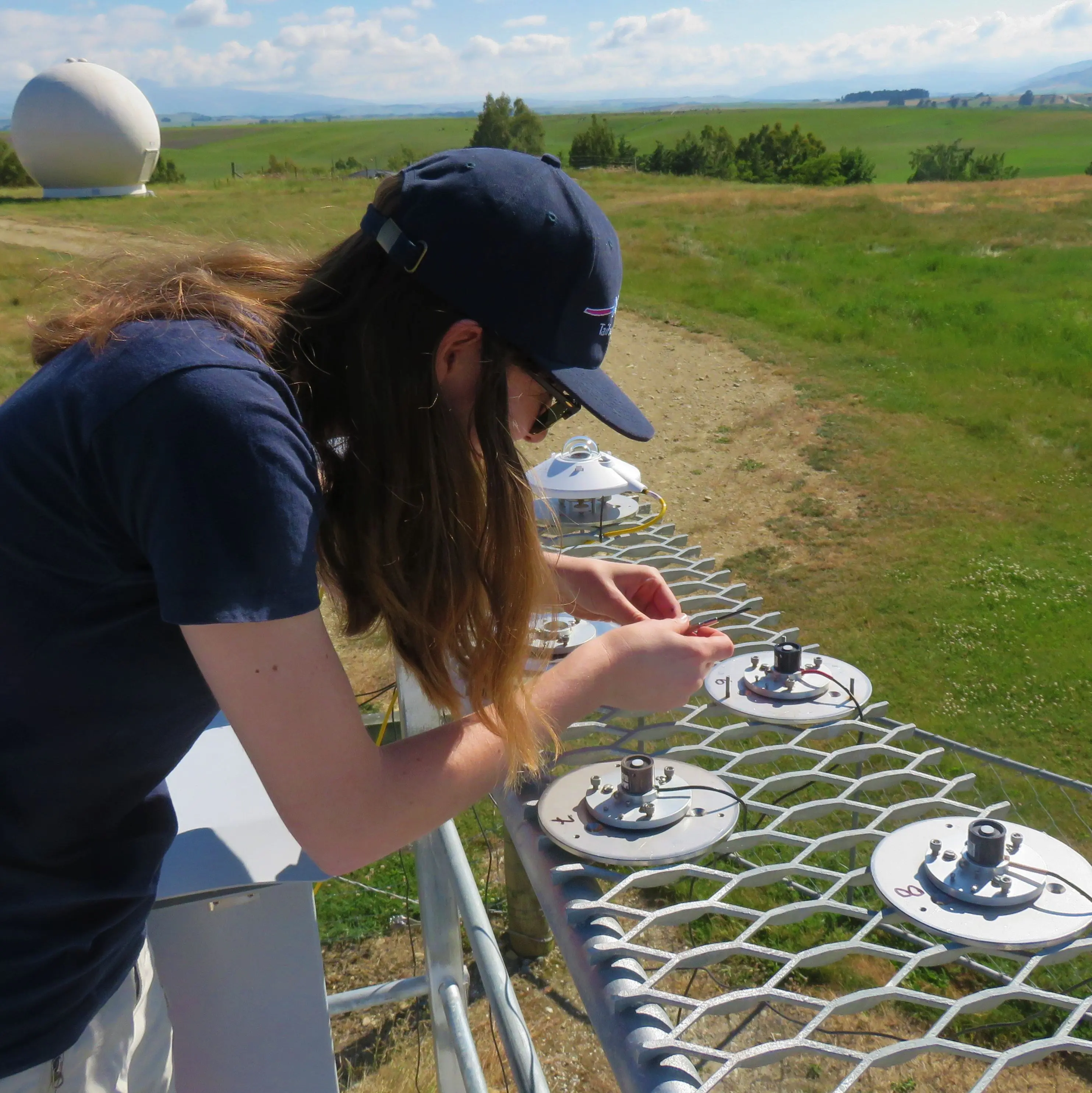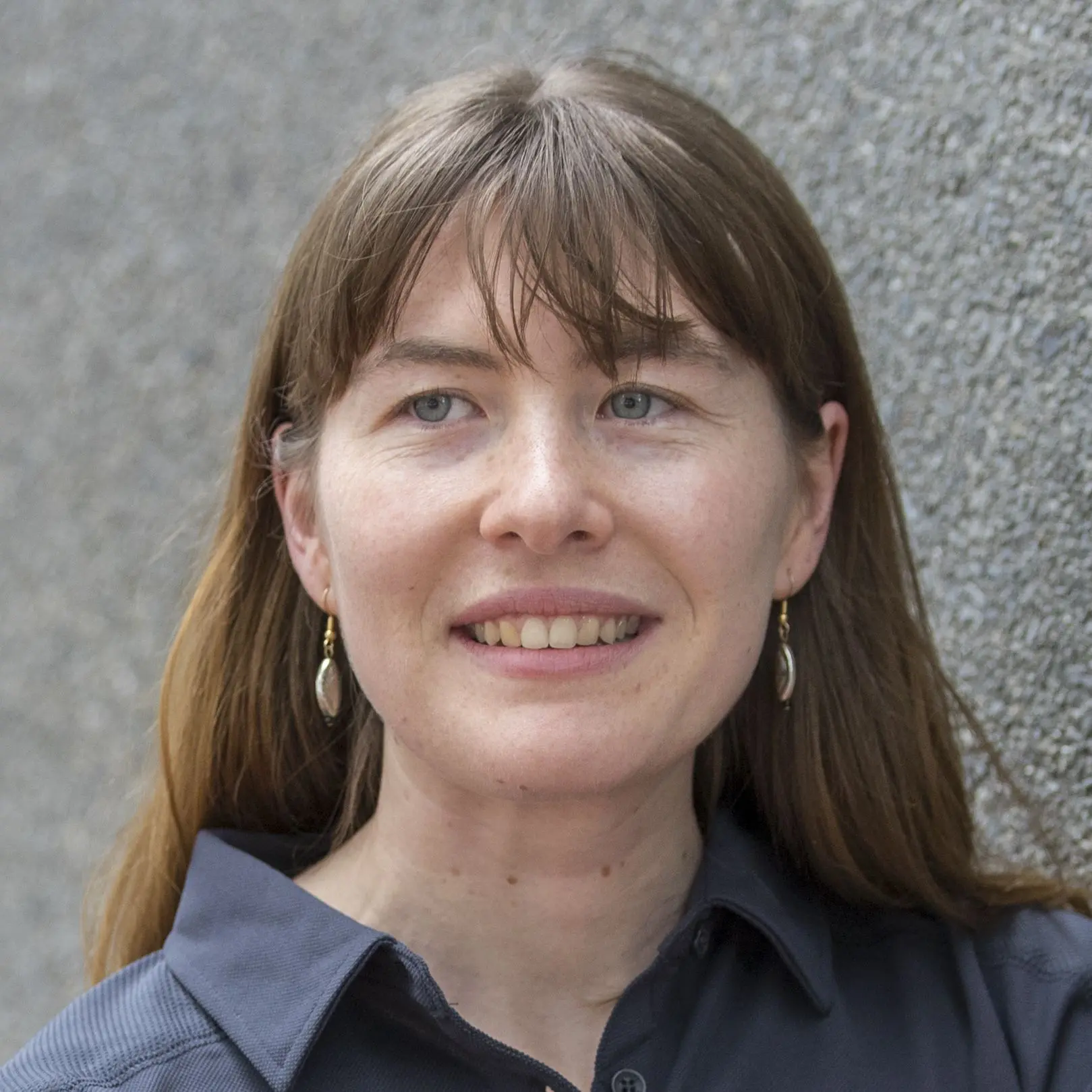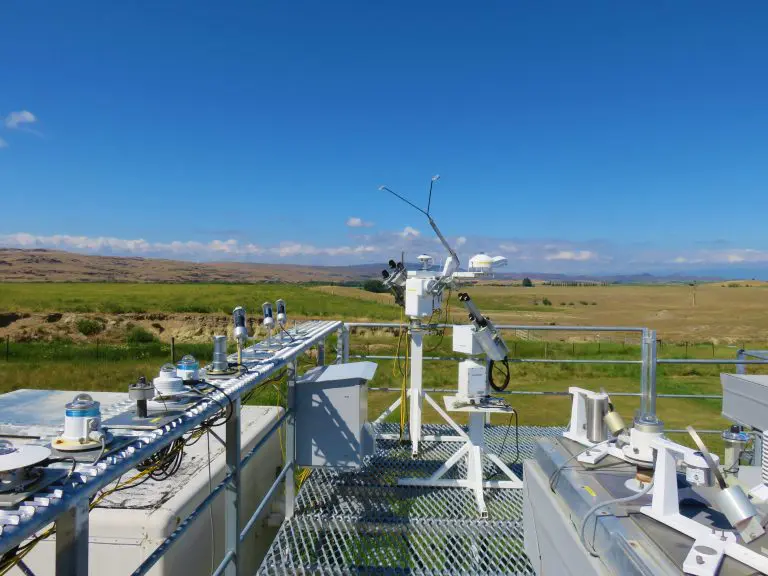I’ve spent the first week of my ambassadorship 35 kms from Alexandra in the small Central Otago settlement of Lauder, home to NIWA’s atmospheric research station. The station is purposefully situated in the middle of nowhere as its remoteness provides clear skies and clean air, making it the perfect site to measure the atmosphere and observe how it is changing overtime.
When I’m not working at the station I’ve been exploring the remote and hidden parts of New Zealand down in Central Otago with Michelle, a fellow Vic student based at the Clyde Plant and Food Research site just outside of Alexandra.
The atmospheric research station, established in the 1960s, is set up like a small farm which hosts many interesting world-class instruments measuring the atmosphere including greenhouse gases, ozone, and UV radiation. The importance of this research facility is directly related to pressing environmental issues such as shrinking glaciers, sea level rise and ocean acidification, all of which begin with the atmosphere.
During my time at Lauder I’ve gained an appreciation for the invention and upkeep of the various instruments used to measure the atmosphere. Along with methods designed to catch parcels of air and measure their composition, the instruments measure greenhouse gases and ozone through remote sensing or measuring compositions that are far away in the atmosphere above.
How is this done? Many conversations here at Lauder have started with the visible light spectrum shown by the rainbow on a Pink Floyd T-shirt and an explanation of all other energy produced by the sun including infrared radiation. We can’t see infrared radiation, but we can sense it in the form of heat given off by the sun and in many household appliances like a stove or a toaster. This energy also happens to be absorbed by greenhouse gases in the atmosphere. As we continue to emit substances like carbon dioxide the atmosphere acts more and more like a tightly wrapped blanket surrounding the Earth, trapping in the warmth that would otherwise radiate back out into space.
By measuring atmospheric infrared radiation, the scientists here at Lauder can accurately determine greenhouse gas concentrations that exist between the ground surface and the sun. These measurements are extremely precise so that they can be used to validate NASA’s OCO-2 satellite that records global greenhouse gases during its orbit, regularly flying 700 km above Lauder. Satellites work in a similar way to ground-based instruments but instead of measuring the energy entering earth, they measure the heat that is emitted back out into space.
When something as important as greenhouse gases is measured, a high degree of accuracy is critical. Every day several different methods are used to ensure all instruments at various locations provide consistent results concerning the state of our atmosphere. And no surprises here – over time carbon dioxide measurements consistently show the same rising trend and the Earth continues to warm at an unprecedented rate.


Lisa Dowling
BLAKE NIWA Ambassador 2017


